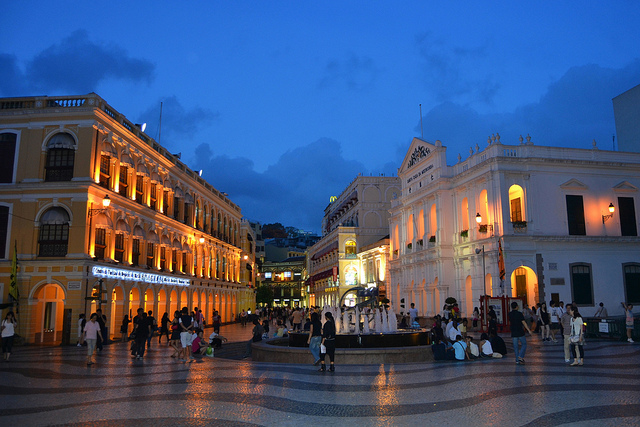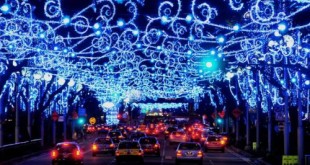Nepal’s landscape evokes a sense of calm and tranquility, but its bid for nationhood does not. The 2013 Constituent Assembly elections is yet to be conducted later in November, and its outcomes will either put the country on a stalemate, or help it push forward for democracy.
There’s plenty more to Nepal than this tangled state of affairs, and the Nepali holidays best speak of the country at the crossroads of asserting its national identity and accommodating changes to keep up with the times.
Below is a list of Nepal public holidays 2014.
Martyr’s Day –Thursday, 30 January 2014
Nepal’s struggle for sovereignty and nationhood has produced a horde of martyrs and heroes that are honored on this day, the most revered of whom were executed in 1941. The most important commemorative ceremony – and a huge street demonstration – is held in Martyr’s Memorial Park in the Nepali capital, Kathmandu, while memorial services also take place in markers for known and unknown martyrs all throughout the country.
Democracy Day –Wednesday, 19 February 2014
Nepal was once under the tight control of the Rana Dynasty who ruled the country for 104 years. On this day in 1951, they were ousted from power. Although the country today is still at a crossroads politically, the Armed Forces and civic organizations celebrate Democracy Day with a bugle at sunrise and firing of cannons from the top of Bhimsen Tower in the capital. The Nepal Army Pavilion is where the formal ceremony is held, attended by the Prime Minister and other high-ranking government officials.
Nepali New Year – Thursday to Saturday, 10 to 19 April 2014
One of the most important dates on the Bikram Sambat is the Nepali New Year which roughly coincides with the arrival spring, usually in mid-April. The New Year is celebrated for 9 days, with the fifth day from the start of the festivities the actual public holiday. There are several rituals that are carried out in the course of the New Year, and they speak of the Nepali belief in the washing away of the old and in welcoming new beginnings. On the first day of Bikram Sambat, people take a bathing ritual in Hanumantay River to let all misfortunes and diseases of the coming year be carried away by the river. Be forewarned that Nepal is bathed in animal blood in the course of New Year festivities to appease the Hindu gods. A symbolic procession is also held around town, where the chariots of Bhairav and Bhadrakal (manifestations of Shiva and his consort) are purposely collided – in an event known as Bisket Jatra – to signify the union of male and female, and the birth of a new beginning symbolized by spring.
Republic Day – Wednesday, 28 May 2014
The monarchy ruled Nepal for 240 years until it was overthrown and replaced by Constituent Assembly. As a republic, Nepal is in its early stages, and the 7th Republic Day will be celebrated with cultural performances, civic parades and military participation in Kathmandu.
Krishna Janmashtami –Sunday, 17 August 2014
Krishna Janmashtami is the equivalent of Christmas Day. On the birth of Krishna, Hinduism’s foremost deity, devotees chant “slokas” from their sacred bible Bhagavad Gita, and take part in communal singing of “bhajans” or religious hymns in Patan Durbar Square and in Hindu temples all throughout the country.
Check out where to stay in Nepal here.
Dashain Festival – Thursday to Thursday, 25 September to 9 October 2014
This is one major Nepali festival when the whole country remains shuttered for most of the 15 days that the festival is held, although only the first, 8th, 9th and 10th days of the festival is declared public holiday. Also known as Dasain, Dashain is the Nepali counterpart of better-known Durga Puja. To commemorate Durga’s victory over the demon Mahishasur, the following traditions are maintained:
Ghatasthapana (1st Day of Dashain) – Thursday, 25 September 2014
Nepalis sow barley seeds in a pot of cow dung on this day to prepare an earthly abode for Shakti, a manifestation of the goddess Durga. Prayer rituals are conducted by the family twice a day until the 7th day when the barley seeds have grown to become “jamara,” or a bundle of long yellow grass. The “jamara” and its trappings collectively referred to as the “fulpati” are then brought to the Prime Minister’s residence for an offering ceremony.
Maha Ashtami ( 8th Day of Dashain) –Thursday, 2 October 2014
To pacify the most demonic manifestation of Durga, Nepalis slaughter animals well into dawn until the whole town is “painted red.” The blood is then used to bathe Kali’s statues and the meat are cooked and placed in small leaf plates to be distributed to the poor.
Nawami (9th Day of Dashain) – Friday, 3 October 2014
On this day, buffalos and other animals are slaughtered at the courtyard of Kot in Hanuman Dhoka Royal Palace. It is the Nepalis’ belief that the demons defeated by Durga took the form of a buffalo and other animals which destroyed everything in their path. The Armed Forces fire a 21-gun salute while the ritual slaughter is performed. Machines, (sharp) tools of the trade and vehicles are all bathed in blood in the belief that this will prevent accidents and bloodshed in the coming year.
Viajaya Dashami (10th Day of Dashain) – Saturday, 4 October 2014
From this day until the end of the festival, the family is the focal point of celebrations. On the 10th day, younger member of the families receive blessings from their elders, and these blessings are worn in the forehead in the form of “tika.” Gifts are exchanged, and on the 15th day, Nepalis remain awake by playing cards in the belief that those who do not sleep through the end of the night will receive blessings from the goddess Laxmi.
Tihar Festival – Friday to Tuesday, 24 to 28 October 2014
A Nepalese equivalent of Deepavali (or Diwali), the Festival of Lights is celebrated for five days, although only the 4th and 5th days are declared public holidays. Crows, dogs and cows are all worshipped and fed on this day before people take their first meal of the day. Cows, which are sacred to the Hindus and indispensable to an agricultural country, are bathed, garlanded, fed and worshipped first thing on the third day. It is also on this day that the Nepali clean and decorate their houses with marigolds and festive lights to welcome Laxmi, the goddess of wealth and fortune, into their homes. The fourth day of Tihar, known as the Laxmi Puja, consecrates cow dung, a source of fuel for Nepali families. The final day known as Bhai Tika is reserved for filial devotion, when siblings reunite no matter the distance from each other. Sisters worship their brothers, pray for their long lives, and offer them garlands. In return, brothers give their sisters gifts to cement the filial bond.


